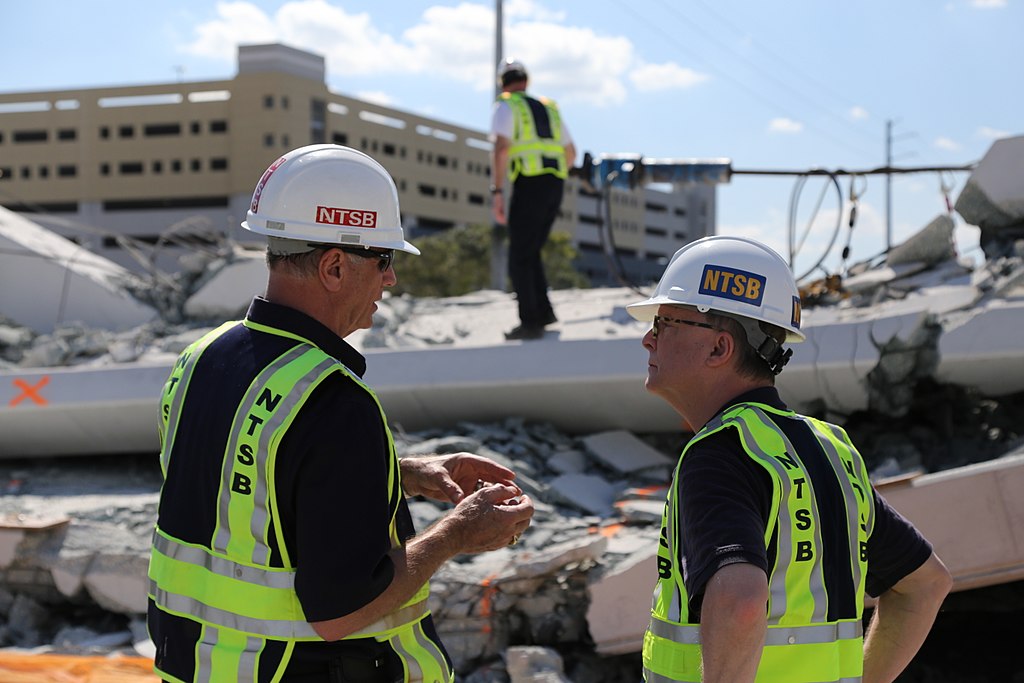On March 15, 2018, 6 people were killed and 8 others were injured when an under construction pedestrian bridge collapsed in Florida. Several months later, the National Transportation Safety Board (NTSB) released their preliminary report while conducting an official investigation. The NTSB later issued an “Investigative Update” to their preliminary report in August. In Mid-November, the NTSB released a 2nd investigative update, narrowing their root cause theories.
Testing and analysis of concrete and steel samples are still ongoing, as is the full investigation, but the NTSB did state that their assessment has determined that there were design errors which contributed to the bridge’s collapse.
Main span being moved on March 10, 2018, prior to placement on the south pier and north pylon pier, looking to the west, labels added by the NTSB.
The latest update states: “Although the evaluation is ongoing, the assessment has determined that errors were made in design of the northernmost nodal region of the 174-foot-long span, where two truss members were connected to the bridge deck. These design errors resulted in (1) overestimation of the capacity (resistance) of a critical section through the node comprised of diagonal member 11 and vertical member 12; and (2) apparent underestimation of the demand (load) on that same critical section. Additionally, the FHWA evaluation determined that the cracking observed in the node prior to the collapse is consistent with the identified errors.”
In addition, other tests have concluded that the concrete samples taken from the bridge deck and canopy met the compression strength requirements and Florida Department of Transportation specifications. The post-tensioning bars examined met the required minimum yield and tensile strength, as well as the percent elongation at fracture. Test results for the #5, #8, and #11 steel rebar also met yield and tensile strength requirements, and percent elongation at fracture. The report states that the #7 bar that was on-site had “collapse-induced deformation” that “precluded their testing.”
samples of rebar recovered from the collapsed FIU pedestrian bridge, await transport to the Federal Highway Administration’s Turner-Fairbanks Highway Research Center, where the samples underwent materials testing as part of the NTSB’s ongoing investigation of the March 15, 2018, fatal, bridge collapse












2 years ago, an under construction pedestrian bridge on Florida International University’s (FIU) campus collapsed onto the open road below, killing 6 people and injuring several more. After a 19 month investigation, the National Transportation Safety Board concluded their investigation late last year, largely placing the blame on the engineer of record’s design. Now, officials are ready to start the process of replacing the bridge.